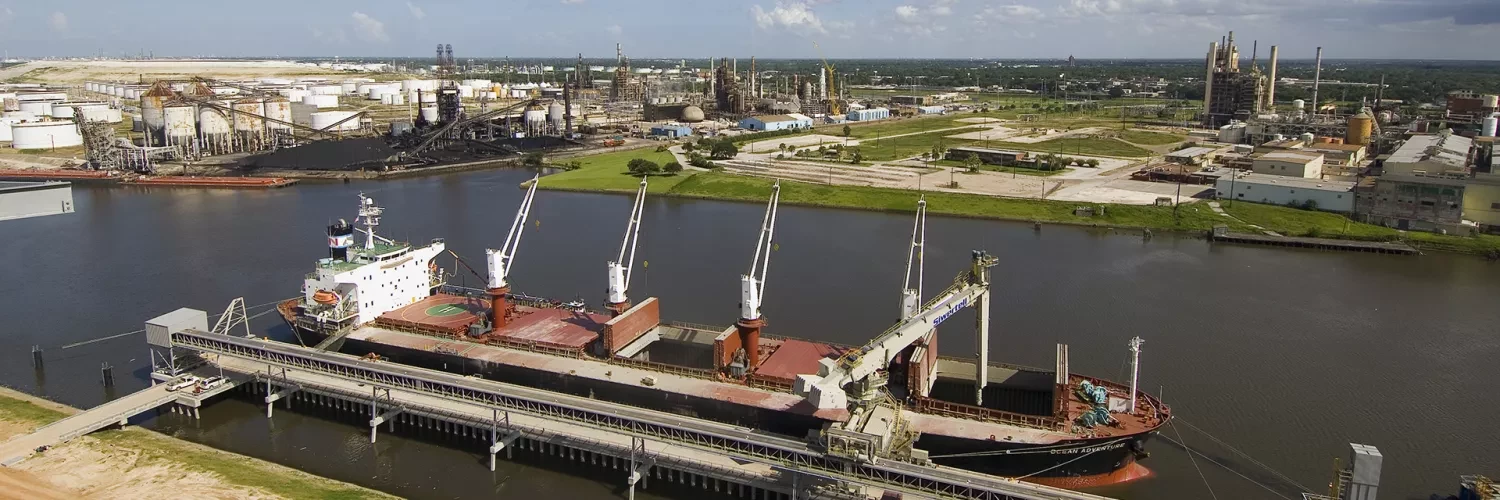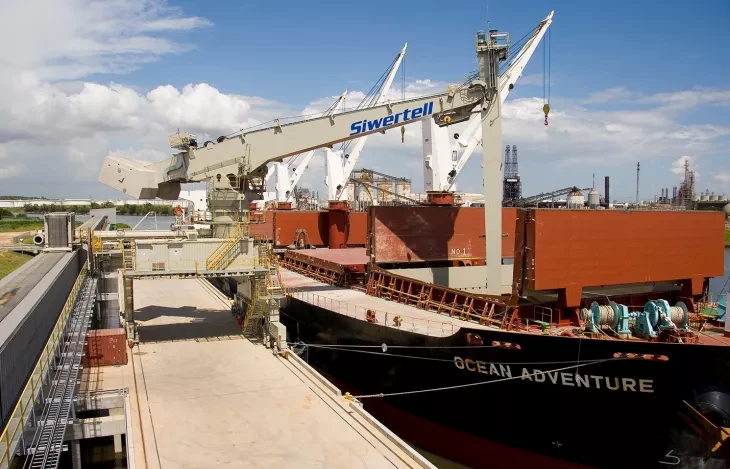Experience a step-change in efficiency with our advanced cement handling systems
Rising populations and the need for infrastructure development is pushing dry bulk cement demand and cement shipping to ever higher volumes. Operators are switching to larger vessels and requiring higher cement handling rates, particularly with regard to cement handling systems within port terminals.
A typical cement terminal configuration until the late 1990s was geared to handle Handymax ships at rates of 800t/h. Today’s demands require many terminals to accommodate Panamax and Post-Panamax tonnage, and offer quicker turnarounds by raising dry bulk cement handling loading and unloading rates.
Siwertell screw-type technology has a worldwide reputation for high-capacity, environment-friendly cement handling. Almost since the very beginning of the Siwertell brand, the cement handling industry has taken advantage of the totally enclosed conveying lines that Siwertell screw-type ship unloaders offer.
Revolutionizing dry bulk cement handling operations
Bruks Siwertell revolutionized the dry bulk cement market when it introduced the Siwertell ship unloader in 1975, bringing with it levels of cement handling efficiency and environmental protection that had not been seen before. Today’s cement handling ship unloaders are able to reach continuous dry bulk cement handling rated capacities in excess of 2,000t/h.
We offer a full range of terminal systems for handling dry bulk cement, including ship unloaders, loaders, road-mobile and port-mobile unloaders, conveyors, storage and reclaiming systems and turn-key projects.
Highest capacity worldwide
The US has numerous, long-standing references for Siwertell cement handling ship unloaders, including a pioneering delivery in 2006 to Houston Cement Company, in Houston, Texas. The operator could sell more cement than it could import and needed to replace an existing pneumatic ship unloading system. It ordered a rail-mounted Siwertell ST 640-D ship unloader, which delivered cement unloading rates of up to 1,500t/h, setting a new world record at the time.
Its high-capacity capabilities meant a reduction in bulk cement unloading days of 50 percent, translating into a 50 percent reduction in berth occupancy and the possibility of higher annual intakes; return on investment was achieved in less than two years.
Now standard, the unloader was also one of the first to feature an auto-level mode, which ensures peak efficiency by keeping the vertical conveyor’s counter-rotating inlet feeder at an optimum level; not digging too deep, or too shallow in the holds when discharging cement from the holds.
The ship unloader has handled in excess of 10 million metric tons of dry bulk cement. With low costs for maintenance and power consumption, this heavy-duty cement handling unloader is exceptionally suitable for the terminal’s high yearly throughput.
The Houston Cement Company order was a catalyst for many more Siwertell cement handling ship unloader orders in the US, and is an integral part of the company’s terminal, which includes bulk cement unloading and storage silos of up to 100,000 metric tons in total.
Tailored systems for dry bulk cement
For any dry bulk cement operation, we have the know-how when it comes to tailoring solutions to meet each customer’s needs. In recent years, we have delivered the market’s highest unloading capacities in dry bulk cement handling.
Ship to shore technology designed for outstanding cement handing performance
Siwertell ship unloaders and loaders have set cement industry standards for decades, offering some of the highest unloading and loading capacities available on the market. Our cement unloaders have rated capacities of up to 2,000t/h, reflecting the use of larger vessels for cement transportation.
As for loaders, Bruks Siwertell has delivered bulk cement handling systems with loading capacities as high as 4,000t/h for ships up to Panamax size. However, we tailor our solutions to suit each customer’s needs, so higher unloading and loading capacities can be achieved if required. Ideally suited to conveying this material is our innovative air-supported conveyor range, which includes the Bruks Tubulator TM and The Belt Conveyor TM .
Cement loader upgrade increases capacity and improves environmental protection
Adelaide Brighton Cement, in Australia, needed a new conveying system to reduce dust emissions and increase dry bulk cement loading capacity. Its order for a Siwertell enclosed horizontal screw-conveying system replaced a belt conveyor arm at its existing cement and clinker loading facility.
Demonstrating the flexibility of Bruks Siwertell’s engineering capabilities, the project called for a new screw conveyor loading arm and upper turret section to integrate with both the existing slewing ring tower support and the existing winch system. It now serves the operator with a maximum rated cement handling capacity of 900t/h, and runs at a service capacity of 600t/h for clinker.
Changing market demands
Increasing demand has pushed cement shipping to larger volumes. Operators are switching to bigger vessels and require higher handling rates. The common terminal configuration until the late 1990s was geared to unload Handymax-sized ships at rates of 800t/h. Today’s volumes require many terminals to accommodate Panamax tonnage and offer quicker turnarounds by raising loading and unloading rates. We have the cement handling capabilities to meet these rising demands.
 Bruks-Siwertell
Bruks-Siwertell

